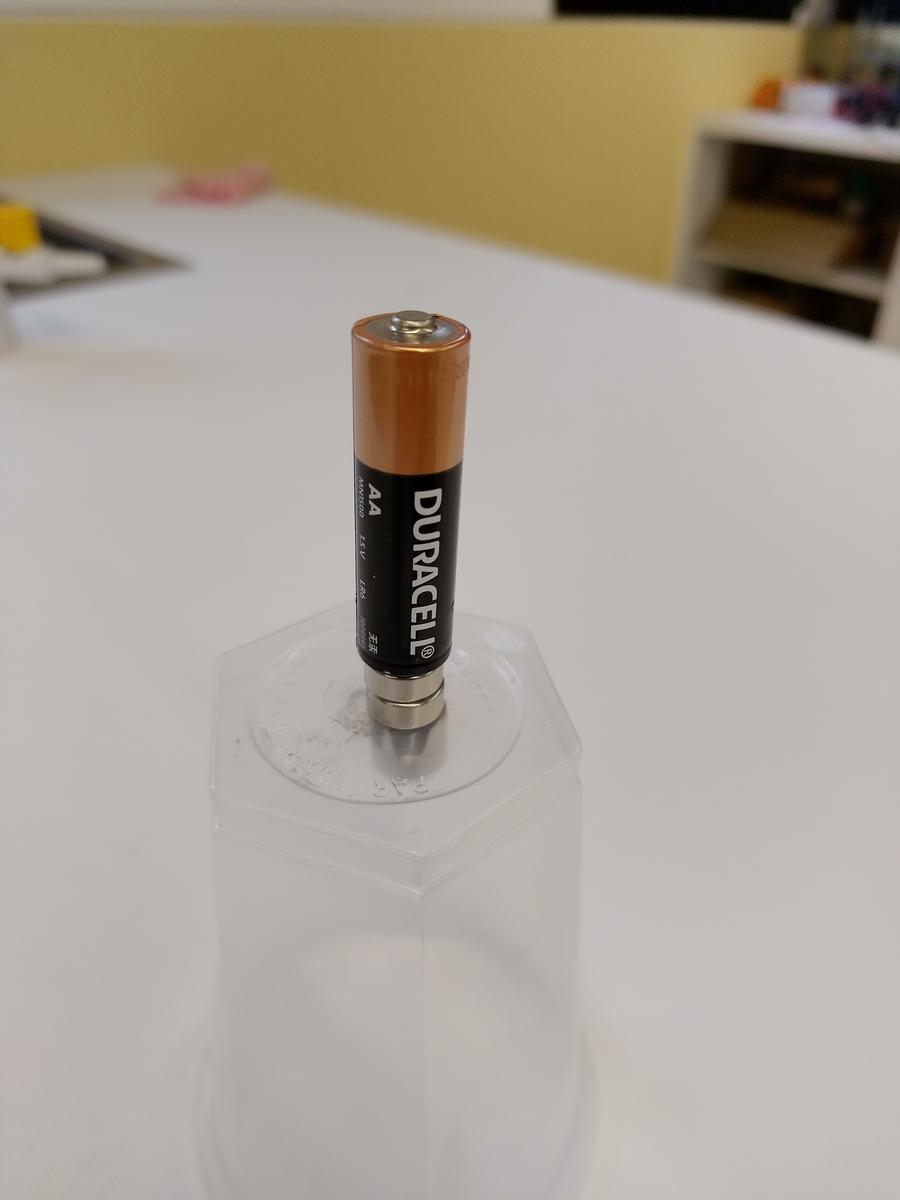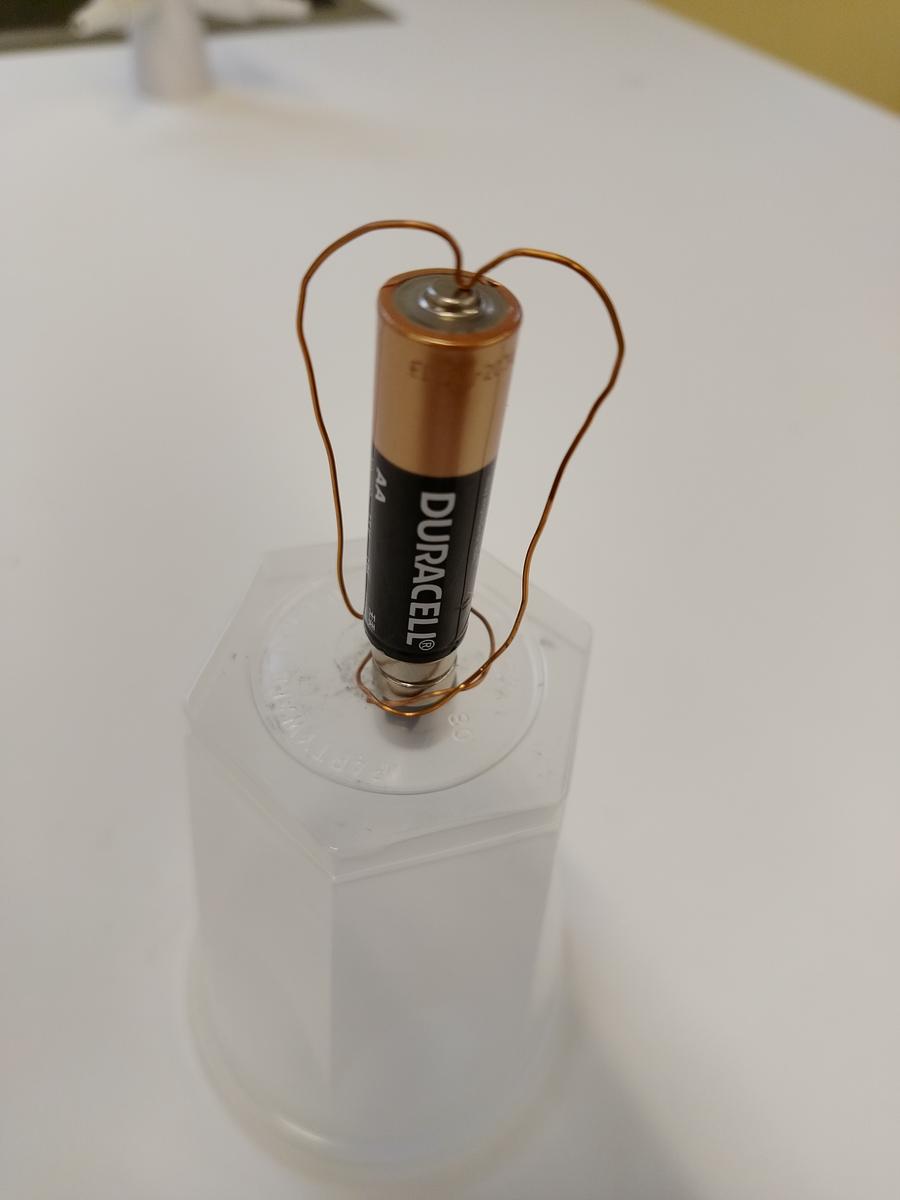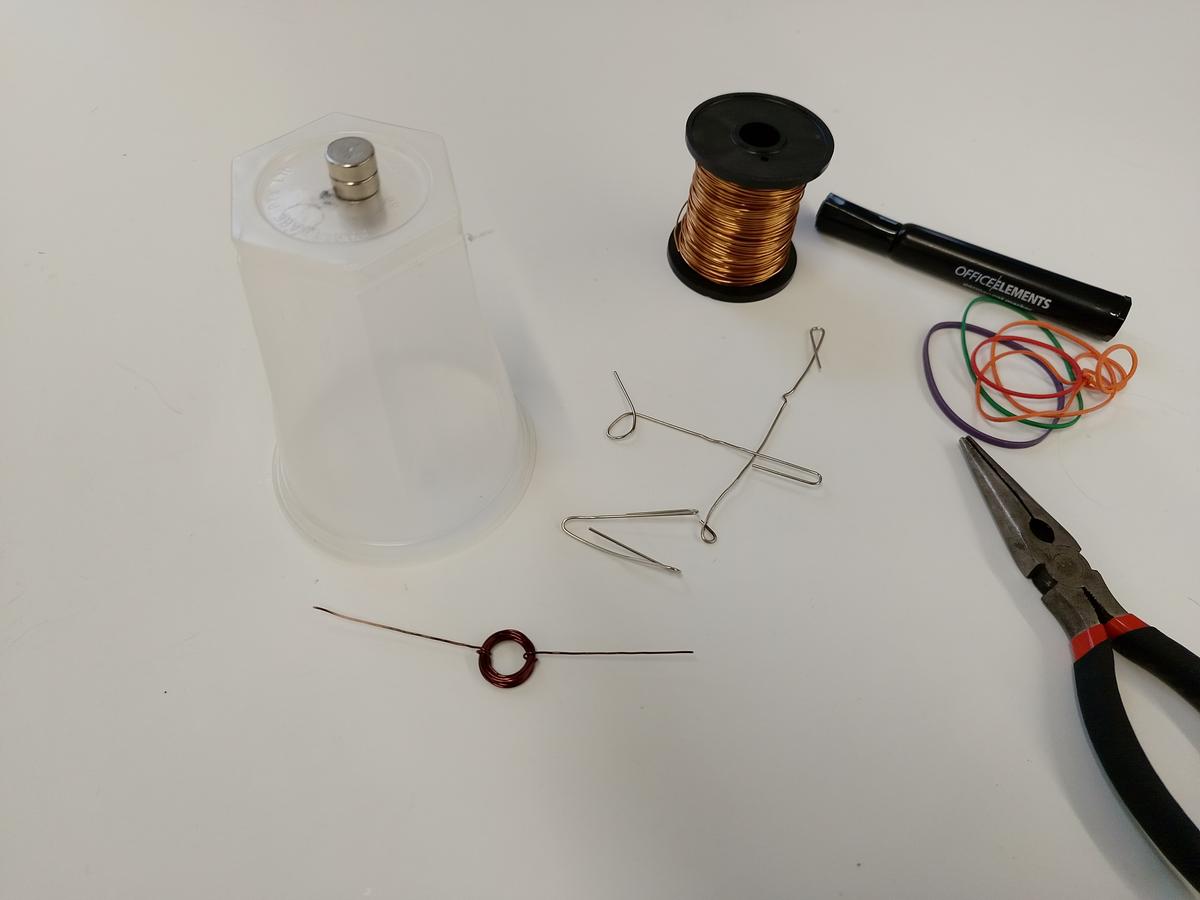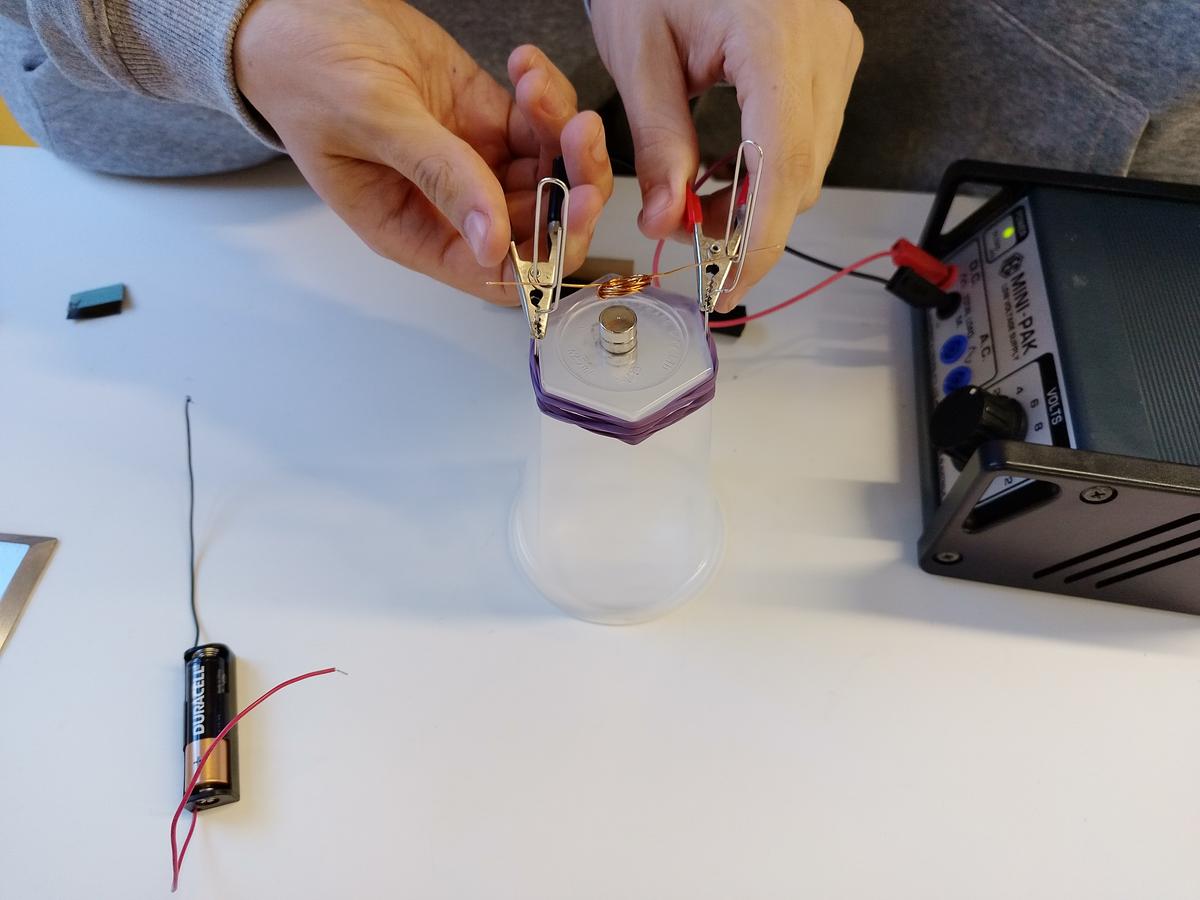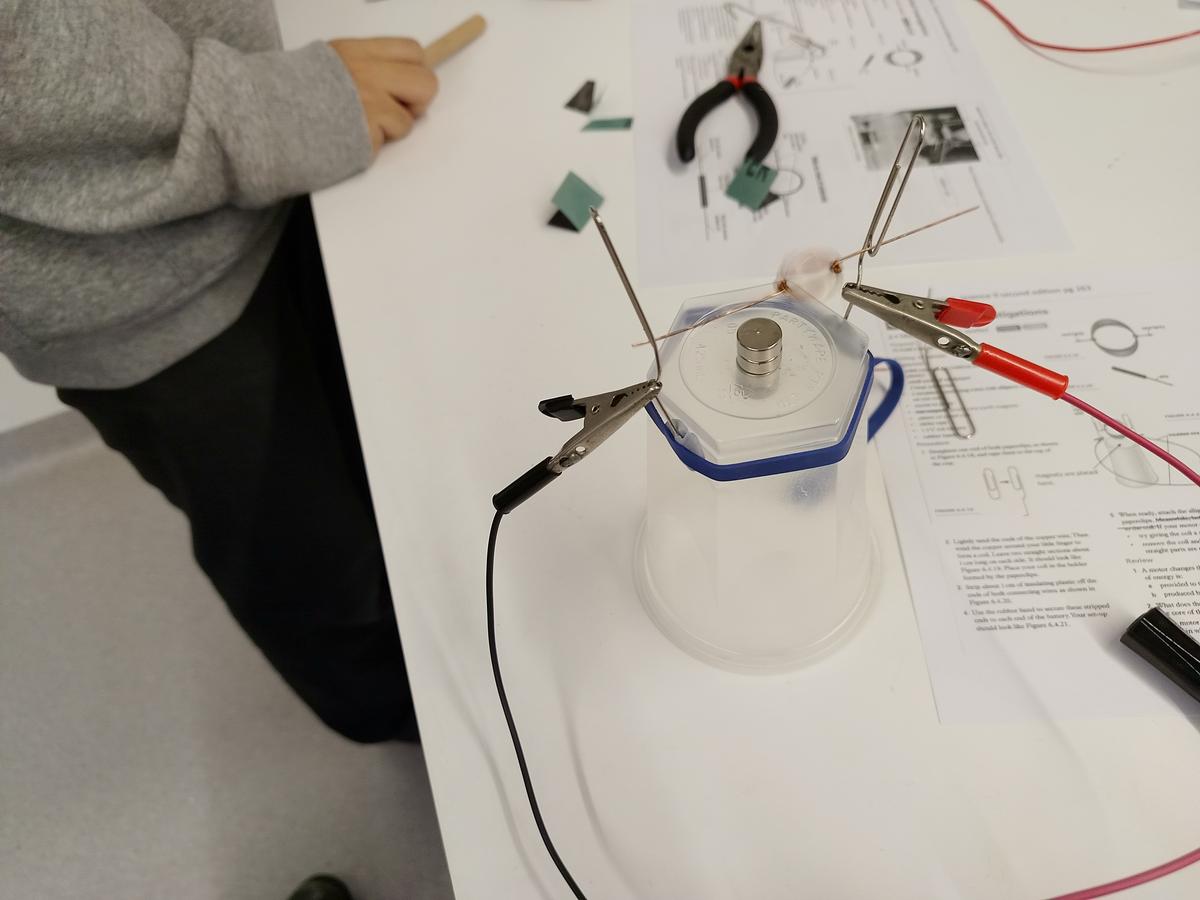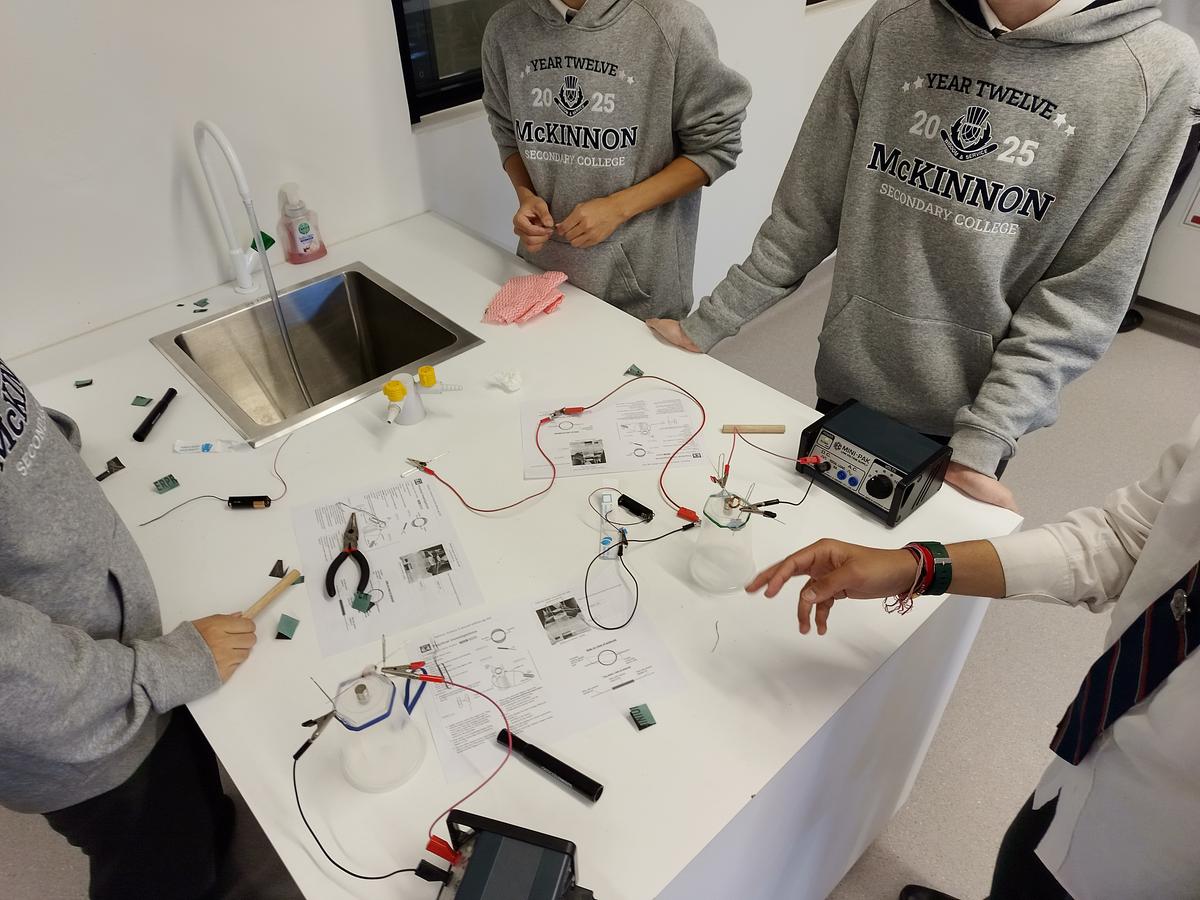SCIENCE

YEAR 12 PHYSICS
HOW TO MAKE YOUR OWN MINI-DC MOTOR IN 20 MINUTES!
Materials:
- one 25 cm long copper wire
- two 25 × 10 mm neodymium disk magnets
- one AA battery
- sand paper
- pliers/wire cutter
- Attach the two neodymium magnets to the base of the battery (diagram 1)
- Use your hands or pliers to bend copper wire into shape. The trick is to ensure it can be balanced on the tip of the battery as it spins (diagram 2)
- Sand off the surface of the copper wire where it touches the tip of the battery at the top AND where it touches the magnet at the bottom. Note: the wire must maintain contact with the magnet at the bottom for it to work
- Adjust shape until it can stay spinning continuously (see video)
YEAR 12 MAGNETIC FORCE/DC MOTOR ACTIVITY
Besides the homemade mini-DC motor discussed, the Y12 Physics group also investigated the effect of magnetic force on a coil with electric current running through it. They used simple materials such as copper wires, cups, paper clips, blu-tack, and of course, magnets to accomplish their task. By placing a conducting loop that is free to spin near a magnet, they were successful in demonstrating the conversion of electrical energy into mechanical energy.
The result: a makeshift DC motor!
Dr Sandy Law
VCE Physics
From the students…
The DC Motor experiment was a hands-on investigation where we turned theory into reality by building actual working motors. What I love about physics is how it connects what we learn to the real world — many concepts are not just abstract, but things we can test and explore ourselves. It’s a subject that combines creativity with problem-solving and maths, and it's a natural next step for anyone who enjoyed Year 9 Robotics or Year 10 Engineering.
Alex Kormas, Year 12
Year 12 Physics has explored the gravitational, electrical, and magnetic forces that shape our world. Recently, we applied those concepts by building our own DC motors. The experience was a fun, engaging, hands-on way to deepen our understanding of the theories we've studied. It also provided a great opportunity to consider the real-life applications of what we learn in school. DC motors are used widely, from electric toothbrushes to washing machines, and it was both fascinating and satisfying to gain a clearer understanding of how scientific principles are utilised in everyday life. The project was a fascinating way for us to connect theory with practice, and reinforced how rewarding it is to understand the physics of the world around us.
Talia Suchard, Year 12
The last physics prac, 'making a simple DC motor', was the most fun I’ve had in class for a long time. The prac was based on building a DC motor with only a power supply, copper wire, paperclips, and magnets. While it was tough to perfect, once the motor started spinning, it was so cool to see that this system is in most electronic devices and is one of the most important systems in modern-day technology. It’s great to take physics because it is the basis of all branches of science, and nothing in the world could be explained without physics.
Thomas Whitney, Year 12
After a short demonstration on how to craft a DC motor out of paper clips, a cup, a battery, some magnets and insulated copper wire, we set off to make our own. After trial and error with the shape of our paper clips, eventually we managed to provide a smooth enough surface for the copper wire to spin freely without creating too much friction and disrupting the motor.
Sam Markham, Year 12
For our electricity unit in physics, we explored how to create simple DC motors utilising magnets, paper clips, and copper wire. By sanding away half the copper wire's insulator, we were able to create a simple motor that rotated due to the magnetic force of the magnets acting on the flowing current in the wire.
Tin Tin Tran, Year 12

